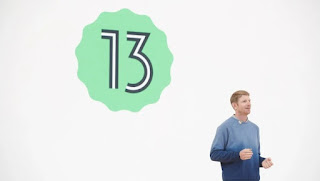Android 13 Beta 2 was released at the Google I/O 2022 event, besides that, a Developer Preview version was announced for a number of cellphones made by Xiaomi, Oppo, Nokia, Realme, etc. Below is a list of cellphones that have received it along with the download link.
Keep in mind that OEM-only Developer Preview releases don't exactly match Google's beta program. So it may not get periodic OTA updates like the Pixel, and may require a total flash.
So it's at your own risk if the cellphone is unstable after installing the Android 13 Developer Preview version. Here's a list of phones getting Android 13 Beta:
1. Xiaomi
Xiaomi 12
Xiaomi 12 Pro
Xiaomi Pad 5
2. Oppo
Oppo Find X5 Pro
Oppo Find N
3. Nokia
4. Realme
Realme GT 2 Pro
5. Sharp
Sharp Aquos Sense6
6. Vivo
Vivo X80 Pro
7. Asus
Zenfone 8
8. Lenovo
Lenovo P12 Pro
9. OnePlus
OnePlus 10 Pro
10. Techno
Tecno Camon 19 Pro 5G
11. ZTE
ZTE Axon 40 Ultra
Features of Android 13 Beta 2
Android 13 Beta 2 comes with a number of new features and user controls, along with privacy and security updates.
In Android 13, Google is giving users more control over what personal information they share and more granular control over what files apps can access. Instead of allowing access to "Files and media," there are two new categories you can control access to: Photos & Video and Music & Audio.
The company is also rolling out a new option that lets users select the right photo or video to grant app access, instead of having to share their entire media library with the app.
Google also wants to give users more control over how they engage with apps and notifications, as apps must obtain user permission before sending notifications on Android 13. The company is also reducing the number of apps that require location. For example, users no longer have to provide a location to the app to enable Wi-Fi scanning.
Even though users already receive a warning when an app accesses their clipboard, Android 13 will automatically clear the clipboard history after a while to prevent apps from seeing the old copied information. Google is also planning to introduce a new unified Security & Privacy settings page in Android 13 that provides a clear indicator of a user's security status while also offering suggestions that will improve security.
Last year, Google introduced the Material You experience, where when you change the wallpaper, the entire Android 12 experience changes to match the color. With Android 13, Google plans to roll out a ready made color variant that will apply the color scheme across the OS.
The company is also extending app icon color themes beyond Google apps. Starting with Pixel devices, users will be able to enable the "Themed apps" setting to have all supported apps match the color of their phone. In addition, Google introduced new media controls that adjust their appearance based on the music they are listening to.
Google notes that personalization in Android 13 also focuses on other areas, such as language preferences. Users will be able to select a different language for each application. This new feature will be useful for people who are multilingual and use different languages depending on the particular situation.
"For example, you might enjoy social media in one language, but bank apps in another," Google said in a blog post. "Android 13 helps you use languages as fluently as you would in real life, so you can choose a different language preference for each of your apps in Settings."
As for tablets, Google is building an Android 12L update that optimizes the layout for larger screen devices. With Android 13, Google will introduce better multitasking capabilities for tablets via an updated taskbar that can be used to easily switch your single tablet display to split screen.
Google has also added palm detection, which will prevent triggering unwanted actions when the user's hand rests on the screen. This new feature will be useful for people who use their tablet to write or draw using a stylus pen.
Lastly, Google plans to update more than 20 of its apps to make it more suitable for larger screens. Many third-party apps, such as TikTok, Facebook, and Zoom, will be revamped for larger screens.

